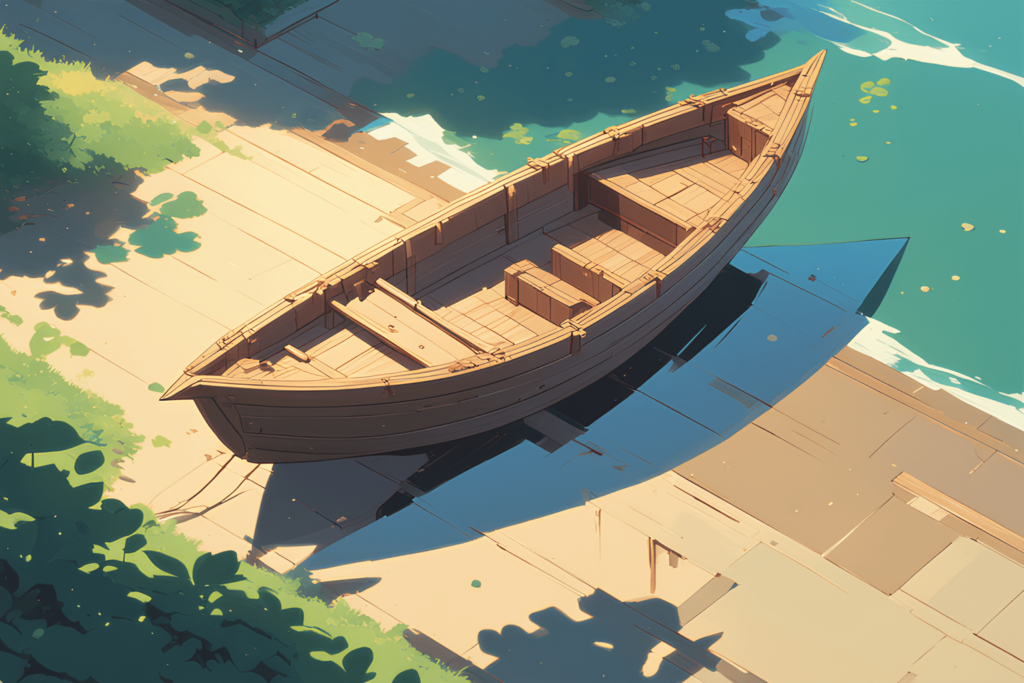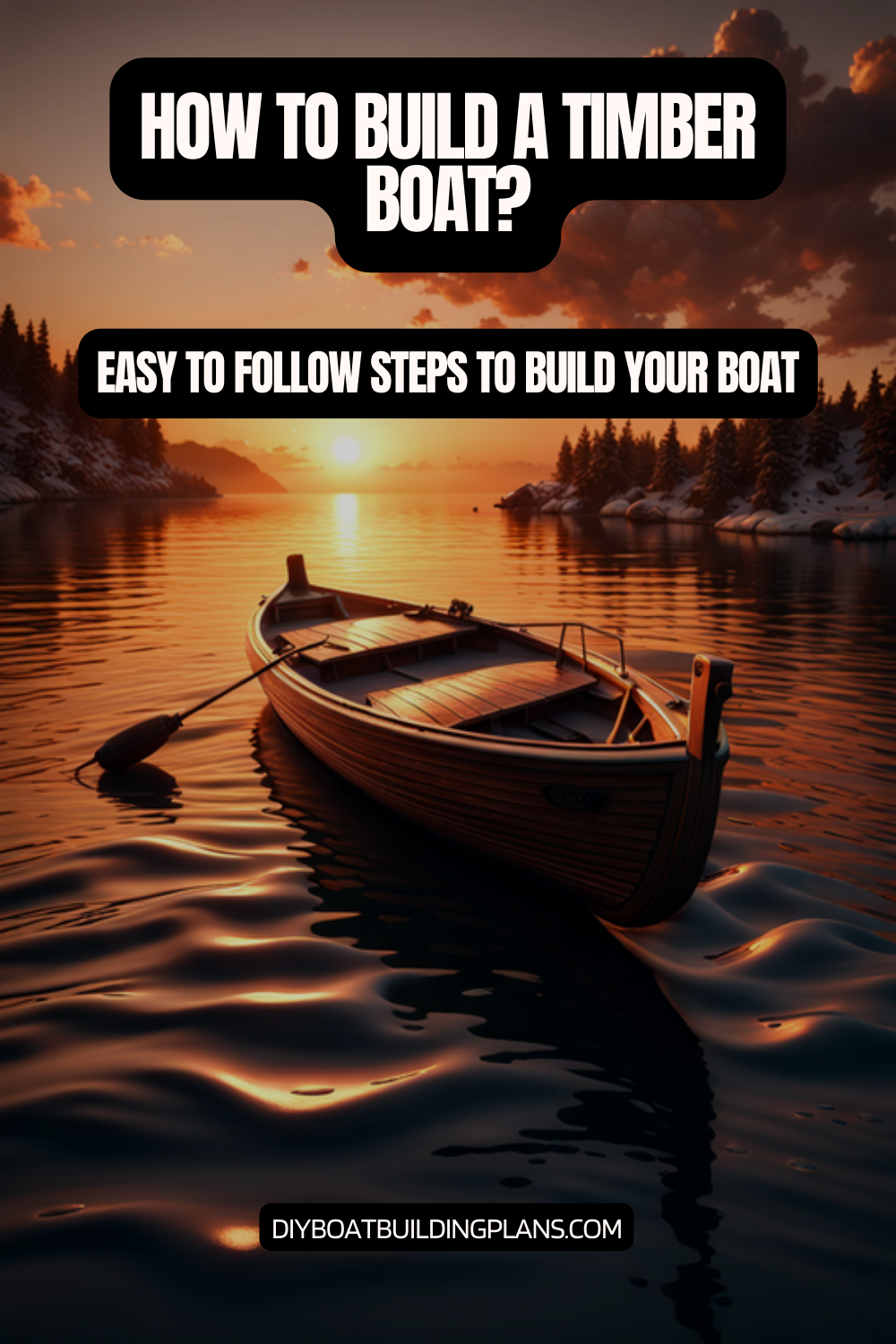Overview of How To Build a Timber Boat
Boat building is a meticulous and intricate craft that requires careful consideration of various factors, including the selection of the appropriate timber. The choice of timber is crucial in determining the strength, durability, and overall performance of the boat. Selecting the right timber is not just a matter of personal preference, but a critical decision that can significantly impact the boat’s seaworthiness and longevity.
When it comes to choosing timber for boat building, several factors must be taken into account. Strength is a primary consideration, as the timber must be able to withstand the stresses and strains of the marine environment. Durability is also essential, as the boat will be exposed to the elements, including water, wind, and UV radiation. Additionally, the workability of the timber is an important factor, as it determines how easily the material can be shaped, cut, and joined during the construction process.
Among the commonly used timber species for boat building, oak, cedar, and teak are among the most popular choices. Oak is renowned for its exceptional strength and resistance to rot, making it a popular choice for the construction of the boat’s frame and structural components. Cedar, on the other hand, is prized for its lightweight and natural resistance to decay, making it a suitable option for the boat’s planking and decking. Teak, with its natural oil content and resistance to weathering, is often used for the boat’s exterior and trim, providing a beautiful and durable finish.
When evaluating the quality and grain of the timber, it is essential to look for straight, tight, and even grains, as these characteristics contribute to the overall strength and stability of the boat’s structure. Knots, cracks, and other imperfections should be carefully inspected and addressed, as they can compromise the integrity of the timber and potentially lead to structural failures.
Key Takeaways
- Choosing the right timber is crucial for building a durable and long-lasting boat.
- Designing the boat’s structure requires careful planning and consideration of the boat’s intended use.
- Preparing the timber for construction involves cutting, shaping, and treating the wood to prevent rot and decay.
- Assembling the boat’s frame requires precision and attention to detail to ensure a strong and stable structure.
- Planking the hull is a critical step in creating a watertight seal and protecting the boat from the elements.

Designing the Boat’s Structure
Designing the boat’s structure is a critical step in the boat-building process, as it lays the foundation for the entire project. Understanding the basic principles of boat design is essential, as it allows the builder to create a vessel that is not only aesthetically pleasing but also highly functional and seaworthy.
The first step in the design process is to determine the desired size, shape, and features of the boat. This decision is influenced by a variety of factors, including the intended use of the boat, the available space for construction, and the builder’s personal preferences. Once these parameters have been established, the next step is to create a detailed plan, either through sketching or by using computer-aided design (CAD) software.
The design process must also consider factors such as buoyancy, stability, and hydrodynamics. Buoyancy, the ability of the boat to float, is crucial for ensuring the vessel’s safety and seaworthiness. Stability, the boat’s ability to maintain an upright position in the water, is another critical factor that must be carefully considered. Hydrodynamics, the study of how water interacts with the boat’s hull, is also essential in determining the boat’s speed, maneuverability, and fuel efficiency.
By carefully considering these design principles, the builder can create a boat that not only looks beautiful but also performs exceptionally well in the water. The attention to detail and the understanding of the underlying principles of boat design are what set apart the truly exceptional timber boats from the rest.
Preparing the Timber for Construction
Once the design of the boat has been finalized, the next step is to prepare the timber for the construction process. This involves several crucial steps, including seasoning and drying the timber, cutting it to the required sizes and shapes, and shaping and smoothing the timber pieces to ensure a precise fit.
Seasoning and drying the timber is a critical step in the boat-building process, as it helps to remove moisture from the wood and prevent warping or cracking during the construction phase. This process can take several months, depending on the thickness and type of timber being used. Proper seasoning and drying ensure that the timber remains stable and dimensionally accurate throughout the boat’s lifetime.
After the timber has been properly seasoned, the next step is to cut it to the required sizes and shapes using saws, planers, and other specialized tools. This process requires a high degree of precision, as the various timber pieces must fit together seamlessly to create a strong and stable boat structure. The builder must also take care to protect the timber from weathering and damage during this stage of the construction process.
Finally, the timber pieces must be shaped and smoothed to ensure a precise fit. This may involve the use of hand tools, such as chisels and planes, as well as power tools, such as sanders and routers. The goal is to create a smooth, even surface that will allow the various timber components to be joined together with a high degree of accuracy and stability.
By carefully preparing the timber for construction, the builder lays the foundation for a strong, durable, and well-crafted timber boat. This attention to detail is what sets apart the truly exceptional boat-building projects from the rest.
Assembling the Boat’s Frame
The assembly of the boat’s frame is a critical step in the construction process, as it lays the foundation for the entire vessel. This stage involves the careful layout and construction of the keel and other structural components, as well as the creation of the ribs or frames that will form the boat’s shape.
The first step in the frame assembly process is to lay out the keel, which serves as the backbone of the boat. This component must be carefully positioned and secured, as it will provide the foundation for the rest of the structure. The builder must also consider the placement and alignment of other structural elements, such as the stem and stern, to ensure that the frame is properly balanced and stable.
Once the keel and other structural components have been laid out, the next step is to construct the ribs or frames that will form the boat’s shape. This process may involve the use of traditional techniques, such as mortise and tenon joints, to ensure a strong and secure connection between the various timber pieces. The builder must also take care to ensure that the frame is properly aligned and braced, as this will be critical to the overall stability and performance of the boat.
Throughout the frame assembly process, the builder must maintain a high degree of precision and attention to detail. Any errors or misalignments in the frame can have significant consequences for the boat’s performance and structural integrity. By carefully constructing the frame, the builder lays the groundwork for a strong, durable, and well-crafted timber boat.
Planking the Hull
| Step | Description | Time | Cost |
|---|---|---|---|
| 1 | Design the boat | 2 weeks | 0 |
| 2 | Choose the timber | 1 week | 500 |
| 3 | Prepare the timber | 2 weeks | 200 |
| 4 | Build the frame | 3 weeks | 1000 |
| 5 | Add the planking | 4 weeks | 1500 |
| 6 | Install the deck and cabin | 2 weeks | 800 |
| 7 | Paint and finish | 2 weeks | 500 |
| 8 | Launch the boat | 1 day | 0 |
With the boat’s frame in place, the next step in the construction process is to plank the hull. This involves the careful selection and attachment of the planking material, which will form the outer skin of the boat and provide the necessary strength and watertight integrity.
The choice of planking material is an important consideration, as it must be able to withstand the stresses and strains of the marine environment. Traditionally, timber has been the material of choice for boat planking, with species such as cedar, oak, and teak being particularly popular. The thickness of the planking material will also depend on the size and intended use of the boat, with larger vessels typically requiring thicker planks.
The process of attaching the planks to the boat’s frame can be carried out using a variety of techniques, such as clinker or carvel construction. In clinker construction, the planks are overlapped and fastened together, creating a distinctive overlapping pattern. In carvel construction, the planks are butted up against each other and fastened to the frame, resulting in a smooth, flush surface.
Regardless of the construction technique used, the builder must ensure a tight and seamless fit between the planks to prevent leaks and maintain the boat’s watertight integrity. This may involve the use of caulking or sealant, which is applied to the gaps between the planks to create a waterproof barrier.
By carefully planking the hull, the builder is taking a critical step in the construction of a strong, durable, and seaworthy timber boat. The attention to detail and craftsmanship displayed during this stage of the process will be a key factor in the boat’s overall performance and longevity.
Finishing Touches: Decking and Fittings
With the hull of the boat now in place, the next step in the construction process is to add the finishing touches, including the decking and the installation of various fittings and hardware.
The construction of the boat’s deck is an important consideration, as it not only provides a functional surface for the crew and passengers but also contributes to the overall aesthetic of the vessel. Timber is a popular choice for decking, as it offers a natural and visually appealing finish. The builder must carefully select the appropriate timber species and thickness to ensure that the deck is both durable and comfortable to use.
In addition to the decking, the builder must also install a variety of fittings and hardware, such as cleats, oarlocks, and other necessary components. These elements play a crucial role in the boat’s functionality, allowing the crew to secure lines, attach oars or other equipment, and generally manage the vessel during operation.
The integration of these fittings and hardware with the boat’s structure is a critical step, as they must be properly secured and aligned to ensure the overall stability and performance of the vessel. The builder must also consider the aesthetic elements of these components, such as their finish and placement, to enhance the overall appearance of the boat.
By carefully attending to the decking and fittings, the builder is putting the finishing touches on a well-crafted timber boat. This attention to detail and craftsmanship is what sets apart the truly exceptional boat-building projects from the rest.
Waterproofing and Sealing the Boat
With the boat’s structure and fittings in place, the final step in the construction process is to ensure the vessel’s waterproofing and sealing. This is a critical step, as it will determine the boat’s ability to withstand the rigors of the marine environment and maintain its structural integrity over time.
The process of waterproofing and sealing the boat typically involves the application of protective coatings, such as varnish or paint, to the boat’s exterior. These coatings serve to protect the timber from the damaging effects of water, UV radiation, and other environmental factors. The builder must carefully select the appropriate coatings and application techniques to ensure a durable and long-lasting finish.
In addition to the exterior coatings, the builder must also pay close attention to sealing any gaps or joints in the boat’s structure. This may involve the use of caulking or other sealants to create a watertight barrier and prevent water from entering the boat’s interior. The builder must also ensure that these sealants are properly maintained over time, as they can degrade due to exposure to the elements.
Maintaining the boat’s waterproofing and sealing is an ongoing process, as the vessel will be subjected to a variety of environmental stresses during its lifetime. The builder must be prepared to address any issues or repairs that may arise, such as cracks, leaks, or other structural problems, to ensure the boat’s continued seaworthiness and safety.
By carefully attending to the waterproofing and sealing of the boat, the builder is ensuring that the vessel will be able to withstand the rigors of the marine environment and provide years of safe and enjoyable use.
Launching and Maintaining Your Timber Boat
The final stage of the boat-building process is the launch and ongoing maintenance of the vessel. This is a critical step, as it will determine the boat’s long-term performance and safety.
Preparing the boat for its first launch involves a variety of considerations, including the method of transportation and the launch site itself. The builder must ensure that the boat is properly secured and supported during transport, and that the launch site is suitable for the vessel’s size and weight. This may involve the use of specialized equipment, such as trailers or cranes, to safely move and launch the boat.
Once the boat has been launched, the builder must then turn their attention to the ongoing maintenance and care of the vessel. This includes regular inspections to check for any signs of wear or damage, as well as the performance of routine maintenance tasks, such as cleaning, waxing, and the replacement of worn or damaged components.
Proper storage of the boat during off-season or periods of non-use is also an important consideration. The builder must ensure that the vessel is stored in a dry, well-ventilated environment to prevent the buildup of moisture and the growth of mold or mildew. This may involve the use of specialized storage facilities or the construction of a dedicated boat shed or garage.
Throughout the lifetime of the timber boat, the builder must be prepared to address any issues or repairs that may arise. This may involve the replacement of worn or damaged components, the refinishing of the boat’s exterior, or the correction of any structural problems that may develop over time.
By carefully maintaining and caring for their timber boat, the builder can ensure that the vessel will continue to provide years of safe and enjoyable use. This attention to detail and commitment to ongoing maintenance is a hallmark of the truly exceptional boat-building projects.
Safety Considerations for Timber Boat Building
Boat building, particularly the construction of timber boats, is a complex and often physically demanding process that requires a high degree of skill and attention to safety. Throughout the construction process, the builder must be mindful of a variety of safety considerations to protect themselves, their team, and the integrity of the boat itself.
One of the primary safety considerations in timber boat building is the adherence to established safety protocols and the use of appropriate personal protective equipment (PPE). This may include the use of safety glasses, gloves, and hearing protection when operating power tools or handling heavy timber components. The work area must also be well-ventilated and free of any potential hazards, such as tripping or falling risks.
The proper handling and storage of power tools and other equipment is also a critical safety consideration. The builder must ensure that all tools are in good working order and that they are used in accordance with the manufacturer’s instructions. Additionally, the storage and maintenance of these tools must be carefully managed to prevent any accidents or damage.
Beyond the immediate construction process, the builder must also educate themselves on boating safety and regulations before launching the timber boat. This includes understanding the local laws and regulations governing the operation of recreational vessels, as well as the proper safety equipment and procedures required for safe boating.
By prioritizing safety throughout the boat-building process, the builder can help to ensure the long-term success and enjoyment of their timber boat. This commitment to safety not only protects the builder and their team but also contributes to the overall quality and reliability of the finished vessel.

Conclusion – How To Build a Timber Boat
In this comprehensive guide, we’ve explored the fascinating world of timber boat building. Whether you’re a boating enthusiast, a woodworker, or someone looking for a unique and customized vessel, building a timber boat offers a fulfilling and rewarding experience. Throughout this article, we’ve addressed what timber boats are, why they are worth considering, the tools and materials required, and the step-by-step process involved in crafting your very own boat.
Building a timber boat is not just about the end result; it’s a journey that allows you to express your creativity, develop valuable skills, and experience the pride of creating something beautiful and functional with your own hands. The benefits of building a timber boat extend beyond the satisfaction of ownership. You can save money, enjoy boating more frequently, and have the flexibility to customize your boat to match your needs and style.
Download over 500 Boat Plans. Click on the link below.
-->Click Here<--
Choosing the right timber for your project is essential, as different woods possess unique characteristics that can influence the boat’s durability and performance. From teak to cedar, each type of timber has its pros and cons, and your selection should align with your priorities and budget.
When it comes to the actual construction, we’ve discussed various techniques for bending timber, making watertight joints, finishing the exterior, and ongoing maintenance. The choice of method and finish will depend on your preferences, budget, and the specific requirements of your boat.
Throughout the process, safety should always be a top priority. Using protective gear, handling tools and chemicals with care, and working in a well-ventilated area are crucial practices to ensure your boat-building experience remains enjoyable and injury-free.
Whether you’re drawn to the idea of building a small dinghy, a sailboat, or a grand yacht, the sense of accomplishment and the pleasure you’ll derive from crafting your own timber boat are immeasurable. So, as you embark on this exciting journey, remember to stay patient, stay safe, and enjoy every moment of creating a vessel that reflects your unique vision and passion for the open waters. Happy boat building!
FAQs
What is a timber boat?
A timber boat is a type of boat that is constructed using wood as the primary material. It is also known as a wooden boat.
What are the advantages of building a timber boat?
Building a timber boat has several advantages, including durability, strength, and aesthetic appeal. Timber boats are also relatively easy to repair and maintain.
What are the steps involved in building a timber boat?
The steps involved in building a timber boat include designing the boat, selecting the appropriate wood, cutting and shaping the wood, assembling the boat, and finishing the boat.
What tools and materials are needed to build a timber boat?
The tools and materials needed to build a timber boat include a saw, drill, hammer, chisels, sandpaper, epoxy, fiberglass, marine plywood, and various types of wood.
How long does it take to build a timber boat?
The time it takes to build a timber boat depends on the size and complexity of the boat. A small boat can be built in a few weeks, while a larger boat can take several months or even years to complete.
Can I build a timber boat if I have no experience in boat building?
Yes, it is possible to build a timber boat even if you have no experience in boat building. However, it is recommended that you seek guidance from an experienced boat builder or take a boat building course before starting the project.
What are some common mistakes to avoid when building a timber boat?
Some common mistakes to avoid when building a timber boat include using the wrong type of wood, not allowing enough time for the wood to dry, not using enough epoxy or fiberglass, and not properly sealing the boat.



